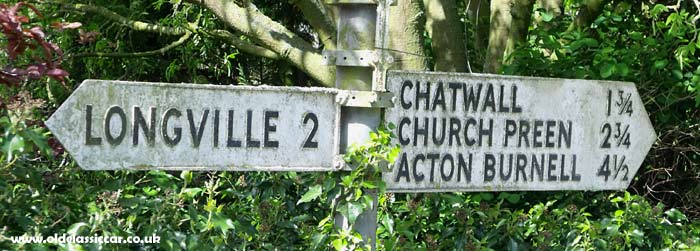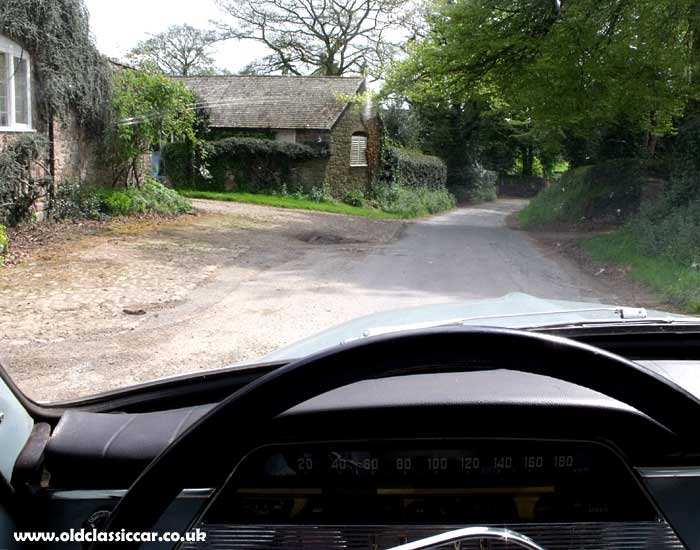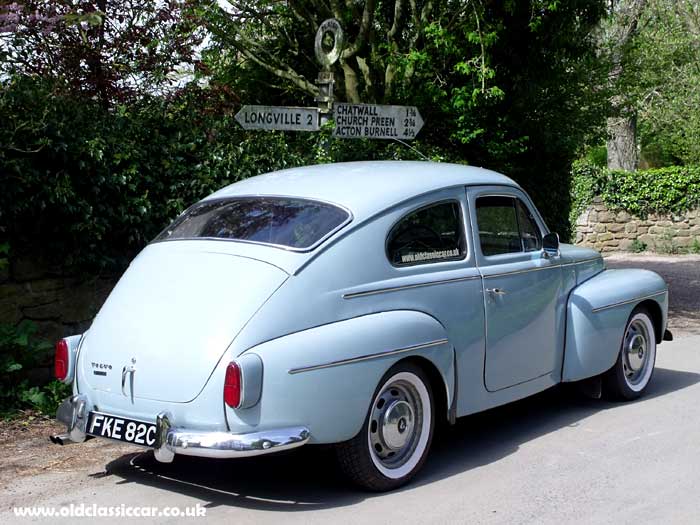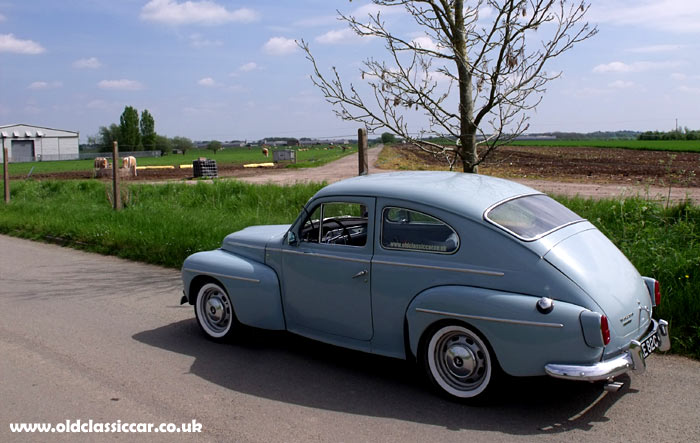
|
A pleasant drive around the lanes of England.
Once upon a time, in the dim and distant past, I ran "old" cars every day. Starting with the family-owned-from-new A40 Mk1, I graduated to a Mk3 Spitfire and later a Volvo 121. All served me well, barring the occasional mechanical meltdown, but at about the time we bought our first house, I graduated to running something modern(ish) for the daily commute. I'm not entirely sure why I went down this route, possibly because 'erindoors and I shared the drive in to work, and subjecting her to draughty door seals, minimal heating, drips on the knee from opened quarterlights and an increasing reliance on the AA to ensure our journeys were completed, probably tipped the balance. After all, running old cars on a daily basis is rarely plain sailing.
|
|
Whenever possible I do use a classic car though. The other weekend the stars lined up "just so". The weather was bright and cheery, the journey to be undertaken would see a number of great roads coupled with stunning scenery tackled, and perhaps most unusually of all, I was "flying solo" with no specific time constraints to work around, and the freedom to pick whatever route I liked.
|
|
Rather than hopping into the modern, with its comforting ride and hushed environs, the old Volvo was re-connected to its battery and coaxed into action for the trip into deepest darkest Shropshire. The destination was buried at the end of several interconnected single-track lanes nestled amidst the hills of Salop, within sight of The Wrekin, a prominent hill in the area, and also Long Mynd, a range popular with glider pilots.
|

|
|
Somehow, driving a modern I feel the urge to press on and get to my destination as soon as possible, especially on roads that flow as well as the A49, horseboxes and well-laden milk tankers allowing. In the venerable old Volvo though, which can trace its ancestry back to the 1940s, it's an altogether more relaxing proposition, in terms of pace if not peace and quiet. Cruising along at 50 or so, window wound down, admiring the scenery with just the Volvo's tough four-cylinder engine for company, it didn't take long to find my turning, and begin my trip back in time driving roads akin to those of the 1950s and before.
|
|
Winding lanes, birds of prey swooping over fields alongside, few other cars, and no clock-watching, resulted in a very pleasant and stress-free journey. Villages, with their quaint cottages and well-tended gardens, were passed through at a leisurely pace, a world away from the hustle and bustle of the A49 and A5 roads, situated just a few miles away. |

|
|
The return trip was to be less predictable in terms of route, and journey time. Determined to avoid the main roads and the many roundabouts that encircle Shrewsbury, I sought out the tiniest back lanes illustrated on my trusty map, passing through villages and hamlets that the modern-day traveller, glued to his or her sat-nav, would rarely choose to navigate. Despite the roads being just wide enough for one car in places, few head-on encounters with other traffic were experienced, although a good number of cycling types were spotted, wearing their brightly-coloured garments, and aerodynamically wind-cheating headgear. Given the surroundings, I could begin to see the appeal of cycling, at least until the next hill loomed onto the horizon and the joys of internal combustion were brought back to the forefront of my thoughts.
|
|
Preferring a car over a pedal cycle may not a very "green" approach to personal transportation at first glance I suppose, although by definition we old-car users are active advocates of re-using and re-cycling old things, every time we set forth on our travels.
|

|
|
In the days of old, when bath time fell just once a week and families huddled around their wireless sets of an evening, roads were simple affairs, bereft of unnecessary street-calming, painted lines in many colours, traffic lights, one-way systems, parking restrictions and other distractions. Their surfaces were often rough, and therefore tough going for the vehicles that had to traverse them, but on the plus side they were relatively un-cluttered.
|
|
Few of the larger roads in Britain remain so today. Hunting down the quieter and near-hidden byways of Britain can therefore be very worthwhile for the old-car motorist, with average speeds much lower than those on the modern highway and therefore more in tune with most older cars' capabilities.
Street furniture, where it exists, rarely clutters the view. Signs reminding the motorist of people on horseback, or impending road junctions, are probably quite useful, and the old cast iron fingerpost signs - often maintained by local home-owners rather than council "engineers" - offer a link with the motorists' environment of the early-to-mid twentieth century, where map-nav rather than sat-nav was the norm, and no-one thought twice of topping up their cooling system with water sourced from a roadside stream before parking up on a grass verge, to sup a cup of tea and munch on an Eccles Cake.
|

|
Re-visiting a former wartime airfield.
Choosing the route less obvious also offers the chance to discover, or in this case re-visit, interesting old locations not signposted from the main roads, or featured in any tourist book. Shown below is what remains of a former RAF airfield from WW2, initially known as RAF Childs Ercall and later as RAF Peplow. Parts of the old runway and taxiways are still visible, although the site has long since returned to being used for agricultural purposes. Happily a number of ex-RAF buildings remain, and are dotted around the area, encouraging the imagination to try and envisage how the place looked, and sounded, during the war. Many large square lumps of concrete, with iron rings set into them, can be seen close to the roadside, and were originally used to attach aircraft to, in case strong gusts of wind - all airfields are windy by their nature - tried to tip them over. It was used as a bomber training base, or OTU, from August 1943, after initially being used as a relief landing ground for nearby Tern Hill. Aviation activity continues to this day, courtesy of enthusiastic model aircraft flyers who frequent the locality at the weekend. The farmed area, visible behind the Volvo in this photo, was originally the end of the main runway.
|

|
|
The remainder of the drive home continued at a leisurely pace, with regular halts to re-check the map and identify obscure roads and lanes to aim for next. While the outbound journey took less than an hour, the return trip took 2.5 hours or so, thanks to the meandering route that the Volvo was directed down.
In future we may look back at this era as being a golden time for classic car use, with zero-rated tax, cheap limited mileage insurance policies, and relaxed MOT rules for many, all helping to keep the hobby of owning and using classic and vintage vehicles attainable to many people, those that prefer carburettors to cup holders, and MGBs over ECUs.
|
|
Return to the Other Articles section. A recent journey undertaken in a 1920s Dodge, that also involves aviation content, may now be found on this page.
|

|











